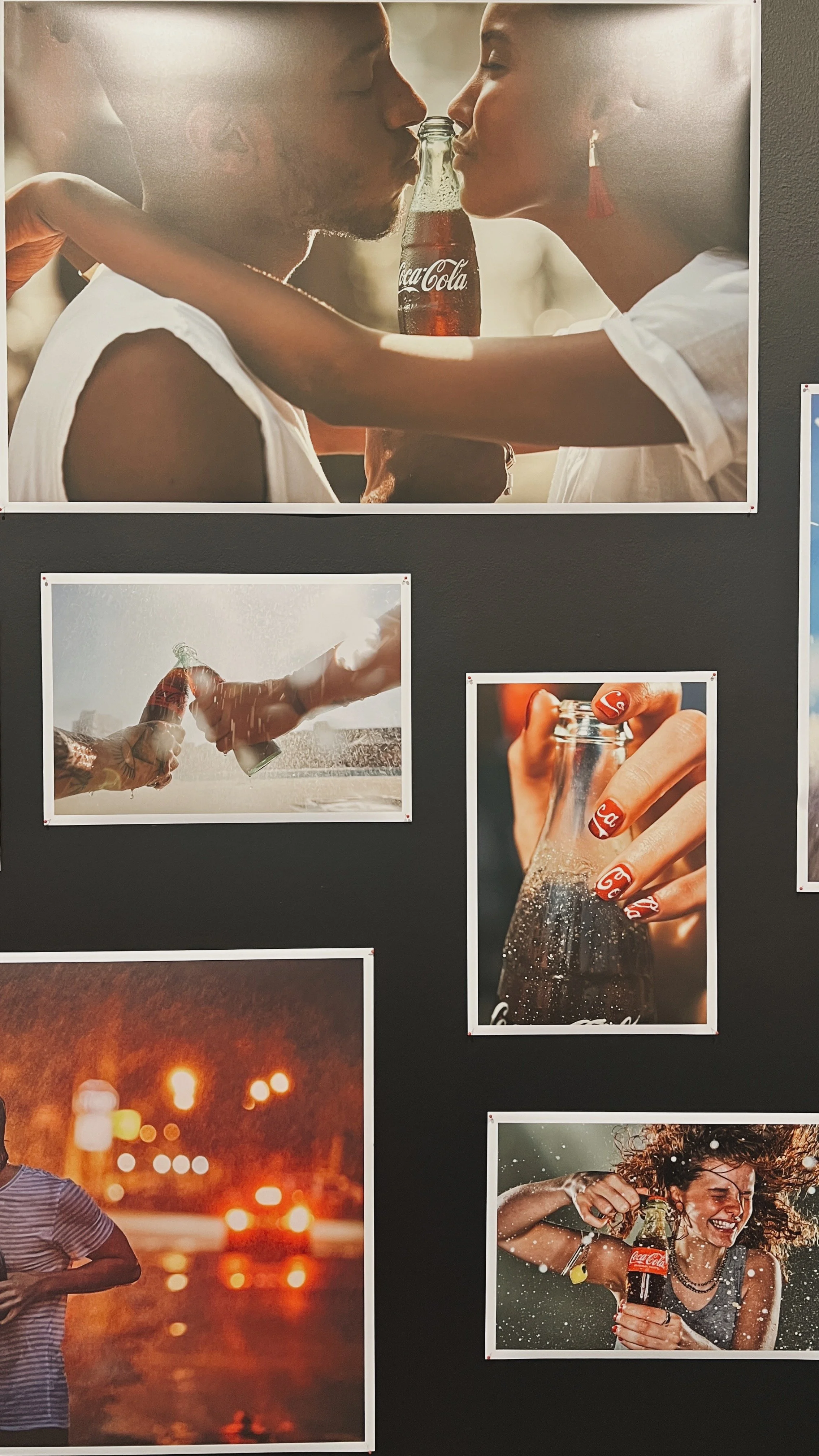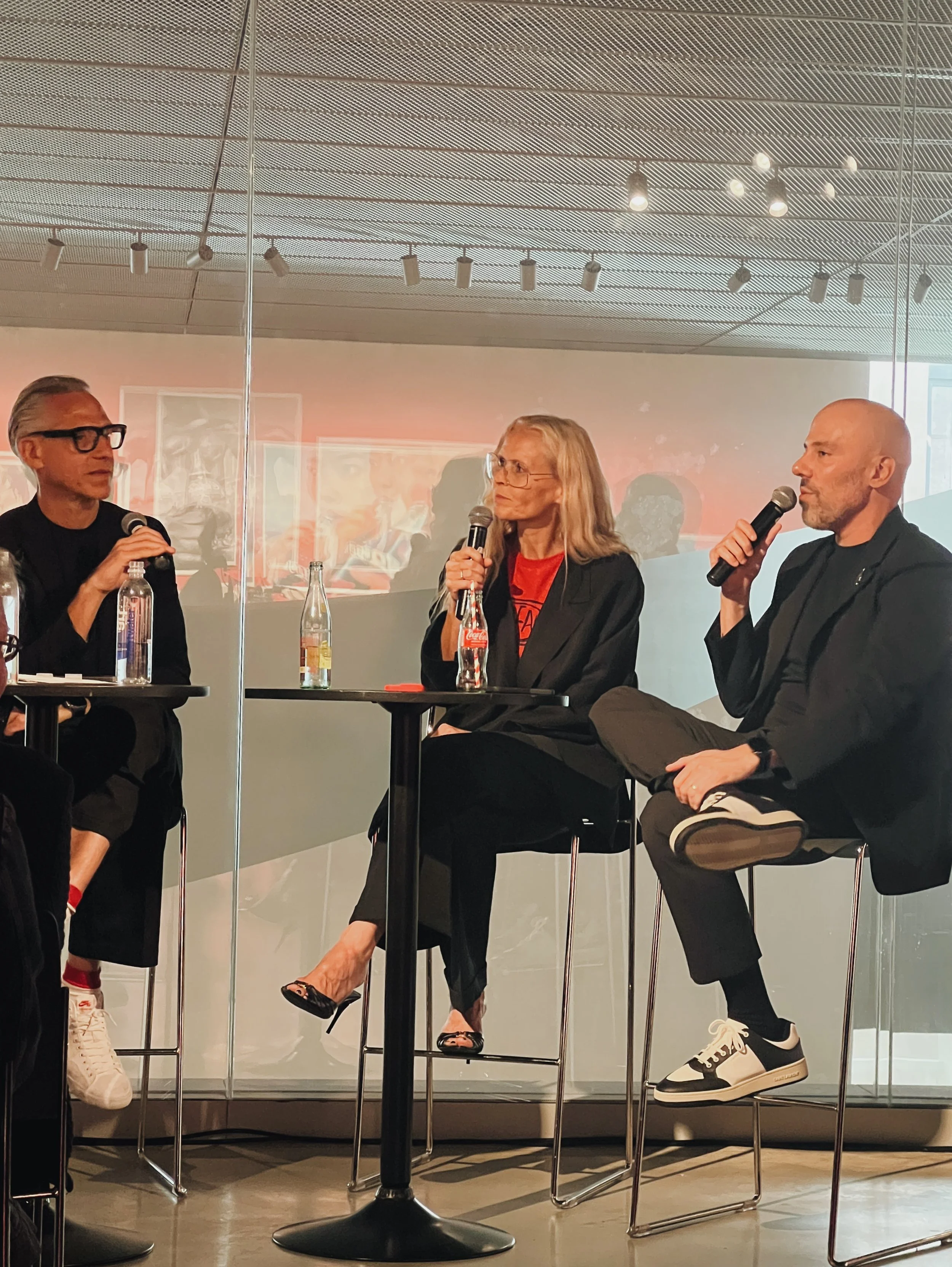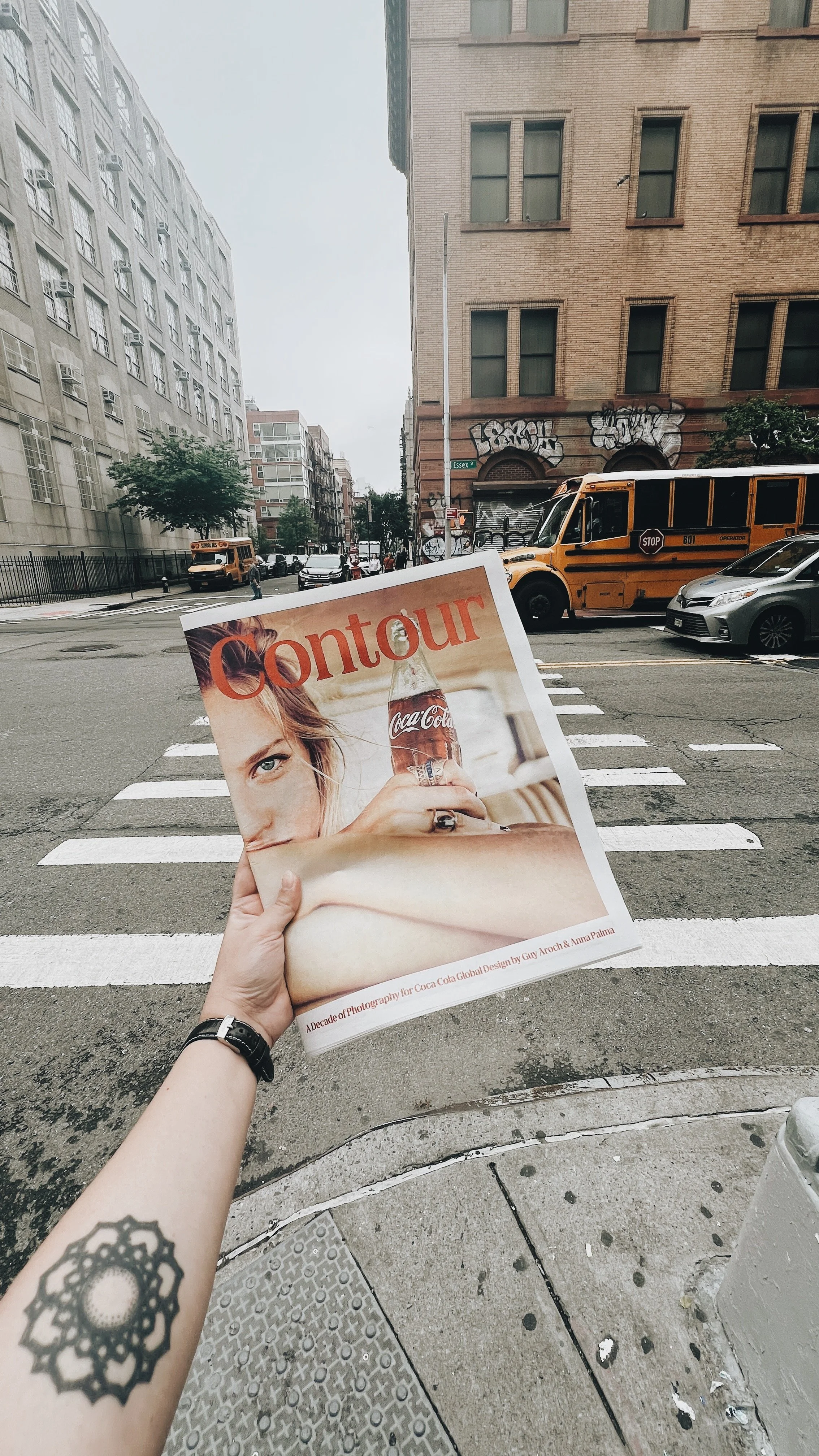From Contour to Culture: Coca-Cola at NYCxDesign
Love it or hate it, Coca-Cola is a brand woven into food stories and special moments of 200 cultures in the world. To me, brand innovation strategist by day and lover of food always, there is no Sunday biryani without a crispy chilled coke on the side.
This past week at NYCxDesign, Coca-Cola’s global design team, led by Rapha Abreu with collaborators Guy Aroch and Anna Palma, kicked off the events of the year. They offered a rare, intimate glimpse into how one of the world’s most iconic brands continues to stay relevant in a rapidly shifting cultural and creative landscape.
Set against the backdrop of the Coca-Cola exhibit appropriately titled ‘Contour’, the talk unpacked the evolution from the platform I grew up seeing, Open Happiness, to Taste the Feeling, and eventually to Real Magic, each era reflecting both the emotional posture of the brand and the cultural climate of the world it lives in.
From Timeless to Timely
“The feeling is always the brighter side of life,” said Rapha, articulating the brand’s north star. But translating that feeling requires a deep and delicate balancing act: keeping the legacy intact while making space for the contemporary.
In building out Taste the Feeling, the creative team leaned heavily into photography, not just as a visual device, but as a medium to celebrate context, emotion, and the ritual of product consumption. Red was an obsession. Details mattered. But so did the spontaneity that came with letting go of rigid plans. The process was about intentionality before the shoot, and freedom during.
Interestingly, there were no pre-sketches. Instead, the team relied on immersive conversations around the setting and the subjects. This fluid approach allowed for more authenticity.
There was something deeply validating in hearing this, especially for those of us who often prioritize ethnographic context over linear workflows. In my own practice, this kind of context-first freedom often produces the most human-centered results.
Real Magic: Culture, Crisis, and Creative Reset
The pandemic, the global reckoning around race, and movements like #MeToo collectively shaped the next evolution: Real Magic. With this came a shift in platform (TikTok over Instagram), tone (raw, diverse, inclusive), and even design requirements, like needing a third of the visual space to hold the logo, while still making it feel like user-generated content.
A standout visual motif? The “hug logo”, adapted into filters and filters-as-artifacts that allowed users to place themselves in the Coca-Cola story. The visuals became looser, more varied in saturation, often unpolished by design. What mattered most was personality. Real people. Real moments.
Photography, Family, and a Bottle at the Center
Guy Aroch, who comes from a fashion background, spoke of intentional wrongness and treating shoots like cinema; Grainy, not overly manicured. Anna Palma and Guy Aroch, spouses and creative partners, approached each campaign as a love story between people and product.
For the Selena Gomez campaign, they captured her while she was simply getting ready, no studio setup, no over-direction. It looked more like a personal portrait than a commercial. At the time, the image became the most liked image on Instagram. While the bottle was always there, it was never trying too hard to steal the frame.
They also mentioned how their daughters often served as informal barometers of cultural relevance. A rare privilege, yet one that makes creative decisions grounded, even when working at a global scale.
As someone who frequently moves between legacy and reinvention in brand work, I found comfort in the way Rapha described navigating “one foot in the past, one in the future” as contemporary nostalgia. There’s a familiarity in that dance. I often describe my own design niche as ‘contemporary/heritage’ and it was powerful to see that same dynamic play out on such an iconic canvas. Perhaps I might update my vocabulary as I adopt the phrase contemporary nostalgia.
So What’s Next?
That’s the question they left us with. How does Coca-Cola continue to be timely without losing timelessness? How does a brand rooted in authenticity and joy evolve in an age where both can be augmented, borrowed, or blurred?
For the team, the answer lies in the conversations, not just the campaigns. In photography as empathy, not just image-making. And in holding space for freedom and discipline, without sacrificing either.
It came as no surprise to me when only a few hours later another one of Coca-Cola’s dynamic creative leaders, Global Head of AI Design Dom Heinrich, announced an exclusive partnership with Adobe, Project Fizzion. If you’re a big fat BrandxAI nerd like me, read more about it here.
As I prepare to return to India after a year consulting in the U.S., this talk felt like a meaningful bookend. A reminder that great design is not just about what you make, but how you listen, and that the real magic often lives in the space between control and chaos.


